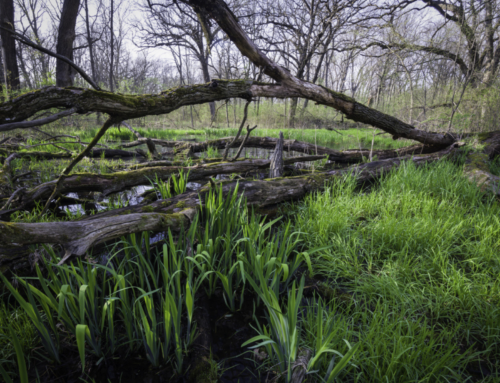January 30, 2014
Secretary Richard K. Sullivan, Jr.
EOEEA, Attn: MEPA Office
Deirdre Buckley, EOEA No. 15033
100 Cambridge Street, Suite 900
Boston, MA 02114
Subject: Draft Environmental Impact Report for EOEA# 15033
MGM Springfield, Springfield, Massachusetts
Dear Secretary Sullivan,
I am submitting comments on the Draft Environmental Impact Report (DEIR) for the MGM Springfield casino on behalf of the Connecticut River Watershed Council (CRC). CRC is the principal nonprofit environmental advocate for protection, restoration, and sustainable use of the Connecticut River and its watershed. This project, located in an urban area of Springfield, is located near the Connecticut River. We limited our review primarily to the issues of water supply, wastewater, and stormwater. Our comments are below.
Water supply
Section 6.5 of the DEIR reports that the Project’s water demand is anticipated to be 246,646 gallons per day (gpd) of potable water, an increase of 213,044 gpd beyond the site’s existing demand. Table 6.6-1 showed the breakdown of water demand estimated for different buildings of the project. The ENF Certificate dated May 24, 2013, however, said that the DEIR should quantify estimated potable and non-potable water demand for each project phase, data sources for these estimated water demands, and give a breakdown of estimated water demand by type (potable, irrigation, fountains, etc.). The ENF certificate also stated that the DEIR should include an estimation of outdoor water use. The DEIR did not appear to provide information about non-potable water demand, demand for each project phase, or how much outdoor water use through irrigation or fountains is estimated. The DEIR does not include an estimate of peak water use, which would also shed some light on outdoor water use. The DEIR does not provide the source of data for the estimates in Table 6.6-1, as requested, which would be helpful when evaluating whether 100 gallons of water use per bowling lane per day is at all valid.
Section 6.5 states that the potable and non-potable water will be provided by the Springfield Water and Sewer Commission (SWSC), and that the projected water use increase will not make the SWSC exceed their current Water Management Act (WMA) registration volume of 39.1 million gallons per day (MGD) (37.2 MGD registration volume + 1.9 MGD allowed for normal variation). Section 5.4.1 states that the SWSC water demand currently averages 36 MGD. The projected average water demand likely will not make Springfield exceed their WMA registration, but Springfield’s demand has varied and in 1990 and 1991, demand exceeded 40 MGD. With the increase in low-flow toilets, as well as more efficient washers and dishwashers, this high level of demand may not be on the horizon. But, according to Tighe & Bond’s recently published a 2012 Massachusetts Water Rates Survey (online at http://rates.tighebond.com/%28S%28tuhhsnmpi0iiob45jsykptih%29%29/Downloads/2012MAWATERFINAL.pdf ), Springfield does not use an ascending water rate as is employed by many municipalities in the eastern part of the state, just a fixed rate of $2.40/hundred cubic feet. It would be wise for SWSC to start using a steeply ascending water rate to encourage water efficiency; perhaps one of the mitigation alternatives that MGM could help with is to pay for technical assistance for Springfield to convert to a more innovative billing system that makes water rates affordable for the average user but high enough to cover the full cost of the water supply as well as encouraging conservation practices.
Section 8.5 discusses the water conservation measures the Proponent will take to reduce the Project’s impacts on water distribution. The bottom of page 8-49 says “These fixtures will include low flow urinals, low flow water closets, and metering faucets.” But on the next page, it says water conservation methods “may include the following: … low-flow urinals, low flow water closets, metering faucets…” Will the proponent use low flow fixtures or not? It is not clear.
We are encouraged that the Project will include strategies from the Handbook of Water Use and Conservation by Amy Vickers, and we like the idea of cisterns collecting rainwater to be used in irrigation and air cooling. But other than these things, the water saving strategies outlined in the DEIR are vague. The ENF Certificate suggested several water demand reduction strategies for hotels, yet the DEIR mentions none of this.
Wastewater
According to Section 6.6, the Project is estimated to generate approximately 224,224 gpd of sewage discharge, an increase of 193,677 gpd over the existing discharge from the properties to be developed. As noted in the DEIR, Springfield has a combined stormwater and sewer system, with numerous CSO outfalls that discharge a mix of untreated sewage and stormwater into the Connecticut River during rainstorms. Any project that increases wastewater flows in Springfield will increase the chances of CSO discharges that impair the water quality of the Connecticut River. Despite the DEIR saying Springfield is complying with its third enforcement order from the Environmental Protection Agency (EPA), by our count they are on their fifth enforcement order for CSOs.
Page 8-53 of the DEIR says that Appendix F includes a letter from the SWSC dated August 28, 2013 stating that the existing CSO system has the capacity to handle the Project’s anticipated average daily sewage flow. The actual letter in Appendix F, however, emphasizes this is true for average flows, but states that the proposed peak flow of 1,207,935 gpd (not provided anywhere else in the main sections of the DEIR) may require several sanitary sewer connection locations to accommodate these peak flows. It also states that on-site storage may be needed to reduce the peak wastewater flow under certain storm events where system surcharging and potential CSOs occur. The peak flow of 1.2 MGD stated in this letter needs to be highlighted in the DEIR. Is on-site storage, as recommended in this letter, part of the design? And what are the peak water uses during this time?
The August 28, 2013 letter from the SWSC also says that “potential impacts to the local water and sewer infrastructure caused directly and indirectly by the construction of the project must be mitigated prior to finalizing the design of the project and receiving approval from the SWSC.” Clearly, more details are needed in the FEIR about water and sewer impacts. The SWSC also implies something not mentioned in the DEIR: that the casino may likely spur other development elsewhere in the city. While those impacts cannot accurately be predicted, it nevertheless is an indirect effect of the Project on the environment.
The FEIR should discuss in more detail how the Project area fits into the draft final Long-term CSO Control Plan (LTCP) for Springfield, and possibly there could be a contribution from MGM to one or more project outlined in the LTCP.
Stormwater
We note that, from a stormwater perspective, developing a casino in an area that is already urban is likely to have fewer impacts than a site that is undeveloped. This proposed project covers 15.6 acres in an area that already has 15 acres of impervious surface. According to page 2-6 of the DEIR, 1.3 acres of impervious surface will be eliminated. Contrast this with the formerly proposed Palmer casino that would have created 50 acres of impervious area in a location that is currently undeveloped forest land!
Page 8-51 of the DEIR says that Low Impact Development (LID) techniques are proposed to be implemented to stormwater runoff. It is not clear what LID techniques are actually being proposed. Section 8.8 provides minimal detail on the Proponent’s plan to reduce stormwater and associated impacts. Having more clearly laid out plans are important in a CSO community.
Page 2-3 of the DEIR notes that the off-street parking spaces have been reduced from 4,800 spaces to 3,740. This reduction may also translate to less polluted stormwater associated with the development.
Additional notes
Page 2-3 explains that the Connecticut River dock and parkland improvements are no longer proposed as part of the project. The Host Community Agreement MGM signed with the City of Springfield, however, provides for a $1 million grant to be paid not later than one year after Project completion for the City to use to improve Riverfront Park. We have not evaluated whether $1 million is sufficient for needed improvements. CRC encourages the City and any developer to improve the connection between the river and people in Springfield. For a number of reasons, it isn’t easy to get to the park from downtown destinations, and the park is in poor condition and doesn’t feel like a safe place to be.
Likewise, we are supportive of efforts to improve Connecticut River walk bikeway connections to destinations within the City of Springfield as explained in DEIR Section 6.2.7.2.
We thank EOEEA for the opportunity to comment on this project. I can be reached at adonlon@ctriver.org or 413-772-2020 x. 205.
Sincerely,
Andrea F. Donlon
River Steward







